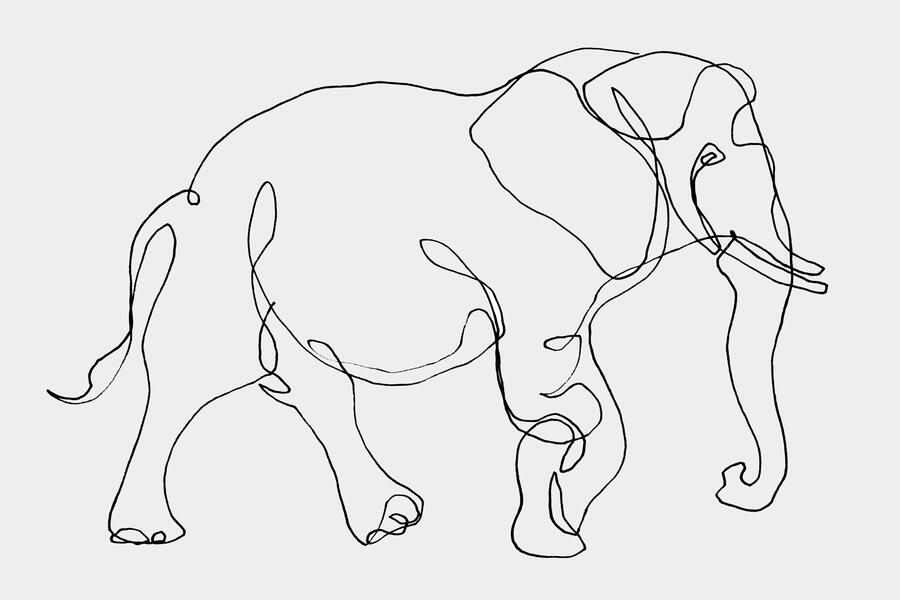Imagine owning a home the scale of the Biltmore Estate in Asheville, North Carolina. Beyond the headache of cleaning 250 rooms, you'd likely wage a constant battle with faulty plumbing, electricity, and crumbling paint and plaster.
The larger the home, the more things can go wrong.
For years, cancer researchers assumed a similar bigger-isn't-necessarily-better belief, deducing that larger animals have higher cancer rates. The thinking went that with more cells, there's a greater chance for cell divisions to go awry, mutate, and create tumors. In the late 1970s, however, English statistician and epidemiologist Richard Peto noted that the incidence of cancer in humans is much higher than the incidence in whales, despite the latter having 1,000 times more cells. Mice, it turns out, have a higher cancer rate than humans. And then there's the catchphrase: "Elephants don't get cancer." (They do, but it's rare.) It all stems from Peto.
The upshot of his work, later dubbed Peto's paradox, was that at the species level, the incidence of cancer did not appear to correlate with the number of cells in an organism. However, nearly 50 years later, a Johns Hopkins–led study published in the February issue of the journal Proceedings of the National Academy of Sciences has punched a hole in one of comparative biology's unresolved enigmas.
Earlier attempts to scrutinize Peto's paradox suffered from a lack of raw data, as animal death records were in short supply. Last year, however, researchers at Arizona State University released a massive data set on cancer prevalence across nearly 292 vertebrate species living in 99 zoos and aquariums across the United States. The 10-year study showed results of more than 16,000 necropsies (animal autopsies) in which veterinary pathologists specifically looked for cancer and identified both benign and malignant tumors.
The ASU study piqued the interest of George Butler, an assistant professor of urology at Johns Hopkins School of Medicine whose research focuses on cancer evolution. "As you can imagine, getting cancer prevalence rates in animal species is hard to obtain, so this was a unique opportunity and an immense data set," Butler says. "For the past 40 years or so, it appeared as if all species were getting a similar level of cancer, regardless of how big they are, and that was what we wanted to either confirm or contradict."
Butler connected with evolutionary biologists and oncology colleagues at both Johns Hopkins and the University of Reading in Berkshire, England, where he earned his doctorate, to examine the data. What they found defied the paradox. In short, larger species do, in fact, face higher cancer prevalence rates than smaller animals across the four major classes of terrestrial vertebrates (amphibians, reptiles, birds, and mammals). However, the study showed that while cancer rates do generally increase with body size, they rise less than expected, suggesting other factors at play, including one that Peto later acknowledged: evolution.
Interestingly, some of the largest animals on Earth have the most cancer protection.
In this genetic game of winners and losers, elephants became a poster child for larger animals that evolved with potent cancer suppression mechanisms, Butler says. "We found that animals that evolved rather quickly, big or small, tend to have less chance of getting cancer," he explains. "And the Asian elephants, in particular, got big really fast." The naked mole rat also has very low rates of cancer, as do dolphins. What these animals have in common is that they developed potent tumor suppression genes, proteins that offered them protection against most cancers.
To explain how this happened, Butler employs the analogy of two cars setting off from Baltimore to Washington, D.C., with one traveling 50 mph and the other 100—and both arriving at the same time. How can that happen? The car traveling at the faster speed used a longer, circuitous route, Butler says, just as some larger animals evolved somewhat rapidly along a more convoluted path, where scientists speculate they picked up these cancer prevention mechanisms.
In terms of losers, small animals such as mice, chickens, budgies (parakeets), ferrets, and hedgehogs have relatively high prevalences of cancers, the study found, again suggesting that size is only part of the equation.
"These outliers will help us understand human cancer better," Butler says. "How and why did some [species] develop these tumor suppression, error-free proteins? If we can better understand the mechanisms that protect [animals], then we can hopefully translate that into better interventions in human cancer prevention and treatment."
Butler says the results of the study come with caveats. For one, they did not yet probe directly into animal behavior by evaluating, for instance, social animals versus more solitary ones, or herbivores versus carnivores. "Plus, all these animals lived in zoos, so it's not a perfect representation of what you'd have in the wild," he says.
Even still, he sees several more routes to explore next with research projects involving this data set.
"Already, we have a list of species that we [can] start to probe and understand what, on the molecular level, is going on there," he says. "We can also look across species and within species dynamics, [asking] why certain people seemingly have a lower risk of cancer compared to others? Is it related to diet? Size? Age? This is a jumping-off point, and there's more work to do here."








